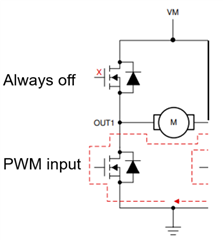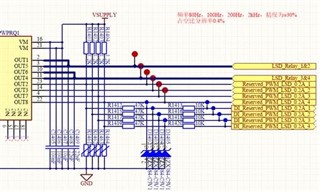Hi Team,
My customer want to use DRV8908-Q1 as below to drive a relay. The relay current is about 200mA. Customer would use the internal half bridge as low side. and they want to check what is the maximum current for the freewheeling internal body diode. Since when the low side MOSFET is off, there would has current flow throw the body diode, so customer want to check the peak current for the body diode. Could you please kindly help on this? Thank you very much for your help.

Best regards
Jie



